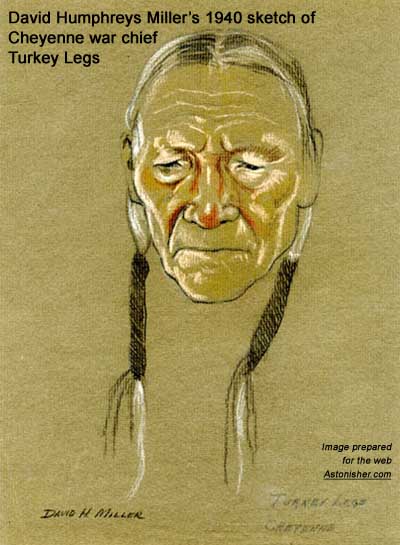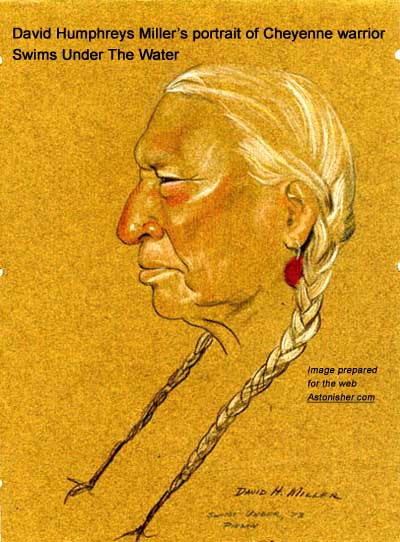|
||||||||||||
Bruce Brown's 100 Voices... Pine's Story of the Battle
PINE'S STORY OF THE BATTLE
"You've been brave," he said. "I think you've done plenty for one day. Now you should take a rest." "I must go and fight the other soldiers now," Pine insisted. "With this captured gun, I can fight all the better." "But your horse is played out," the old man argued. "Then I will take yours -- the one hobbled back of the lodge." "Your elder brother is already up on that ridge fighting the soldiers. There are plenty of warriors around to beat them now. It's not necessary for a man to send both his sons into battle. And you do not have your eagle-bone whistle or your shield, my son." "Get the horse," Pine ordered his father. Then he darted into the lodge in search of his shield and whistle. Outside, the old man brought up the horse and waited. "Now I'm ready." Pine looped the carrying strap of the shield over one shoulder and leaped on the horse. "Stay back as far as you can," cautioned his father. "Shoot from a distance. There's no need to get in too close. Your brother can ride in ahead of you." But Pine was already on his way. He passed two or three other warriors who were hanging back in the camp. "Come on!" Pine shouted. "We're not going," one of them said. Pine rode over to them. He showed them the carbine and the shiny cartridges. "One can take many things from the white soldiers after we kill them. They carry much with them. You'd better come along and see what you can get." At last they gave in. Pine led the way to the ford, crowded now with a great throng of warriors going across to fight the soldiers. Once across, every Indian went his own way, picking his own route to bring him close to the troops. As they began to close in around the soldiers, the warriors dismounted. While riding, they used only a rawhide lariat, wrapped around the pony's jaw or looped over the head to form a simple bridle. The loose end of the lariat was coiled and tucked in the warrior's belt, so that if he fell from his pony, the coil would jerk loose and unwind. Now, as they got down, the warriors automatically yanked the coils from their belts and let them drop. With a long rope trailing, no horse would be hard to catch. Custer's Fall: The Indian Side of the Story by David Humphreys Miller, University of Nebraska Press, Lincoln, NE 1957 p 133 - 135
Miller frequenlty made pastel sketches of the Sioux survivors of the Battle of the Little Bighorn whom he interviewed. Some of Miller's portraits are exceptionally fine evocations of the historic personalities in their own right, such as his portraits of Lazy White Bull and Old Eagle and Black Elk late in life. Click here for information of David Humphreys Miller's sources among the Sioux, Cheyenne, Crow, Arikara and Apapaho. This material was excerpted from Custer's Fall by David Humphreys Miller, and appeared in American Heritage, June 1971. -- B.B.
|
||||||||||||





 Although not born into the Teton Sioux, David Humphreys Miller was adopted late in life by both
Although not born into the Teton Sioux, David Humphreys Miller was adopted late in life by both 







